As an Amazon Associate I earn from qualifying purchases.
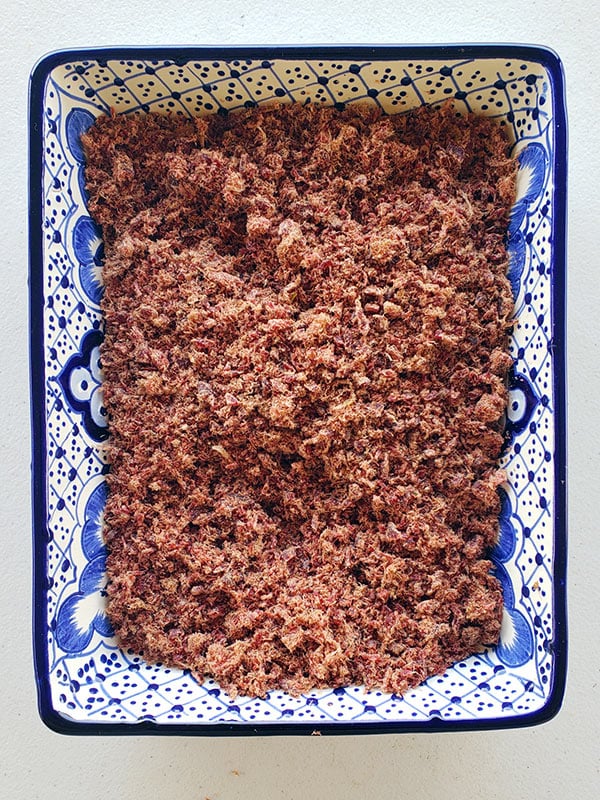
Machaca is one of those seemingly odd Mexican meats that, once you’ve eaten it, is as addicting as it is tasty. What follows are instructions on how to make machaca at home.
What is machaca? Basically jerky meets cotton candy. It’s an ancient way Mexicans have used to easily eat hard dried carne seca, or jerky, that requires no refrigeration. Jerky, pounded into wispy filaments, that are then eaten with eggs, peppers and onions, or however you like it.
Note that there is another, newer version of machaca that involves cooked meat that is then shredded and fried crispy. That’s a relatively new thing and not this recipe, which is more traditional.
Let me start by saying that the best machaca is made by literally pounding carne seca with a rock until it has been blasted into filaments. This is how machaca has been made for many thousands of years. But it is very hard work, and requires a large basalt bowl or metate, and a basalt hammer stone. Not normal kitchen items.
There are machaca machines in Mexico that blitz the jerky into machaca instantly, and I might have to get one on my next trip south of the border. Meanwhile, this is an easy way to make machaca at home.
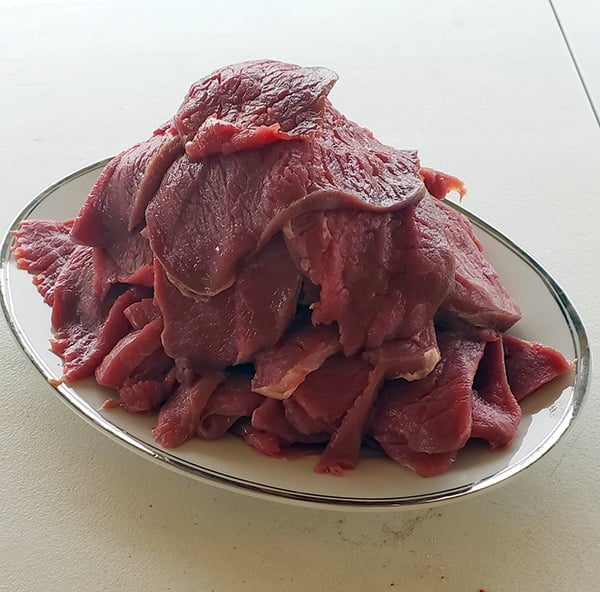
You need to start with thinly sliced meat. In this case, I used nilgai, which is a sort of antelope originally from India brought to Texas a century ago. Beef, deer, elk, moose, etc. are all good choices.
I slice hind leg roasts (chuck roasts), as thin as I can across the grain. Some people slice with the grain, which results in longer filaments, but is harder to process.
Salt them well. No set amount here, just a generous salting on both sides. Let the salted meat sit in the fridge overnight, or at least a few hours. Then you will need to dry it. Here in Sacramento, you can do as they do in Mexico, which is to hang the meat in the hot sun, often with a screen to prevent flies. But only in summer.
In other cases, you will want to dehydrate your meat using, in order of preference, a smoker set to 175°F or thereabouts, a dehydrator, or a convection oven. Unlike my regular recipe for carne seca, you want just salt and you want to dry the meat to the brittle stage.
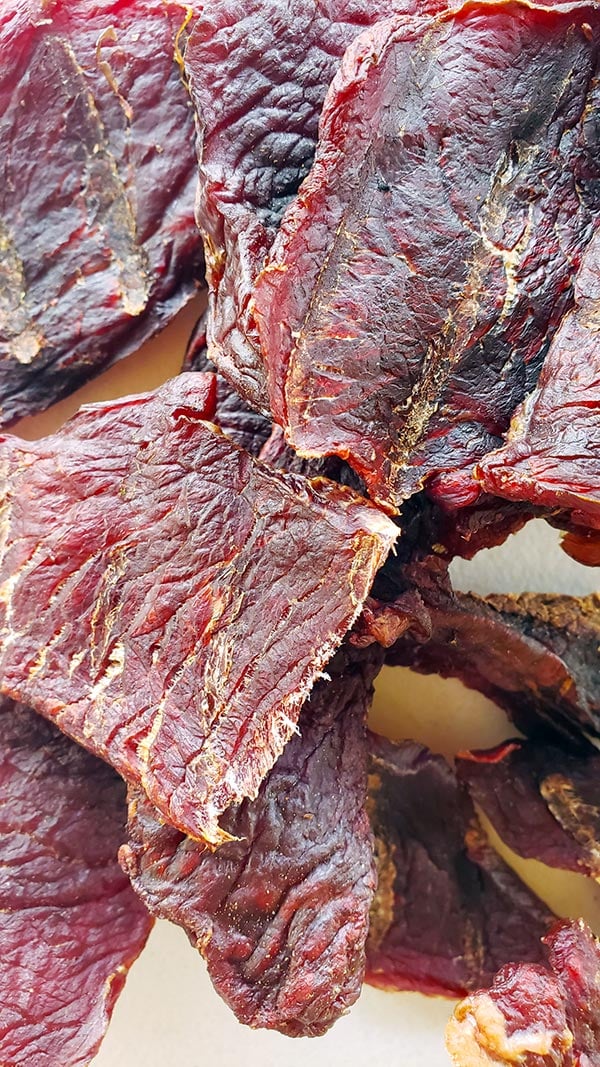
Now you need to break up the jerky, either with your hands or with scissors. Add only a few seasonings — machaca is a beginning to a dish, not a full dish in and of itself — and blitz for a minute or three in a food processor.
You can blast the meat until it is completely broken up, or do what I do and leave some small, but still intact, bits of jerky. This makes for a nice texture.
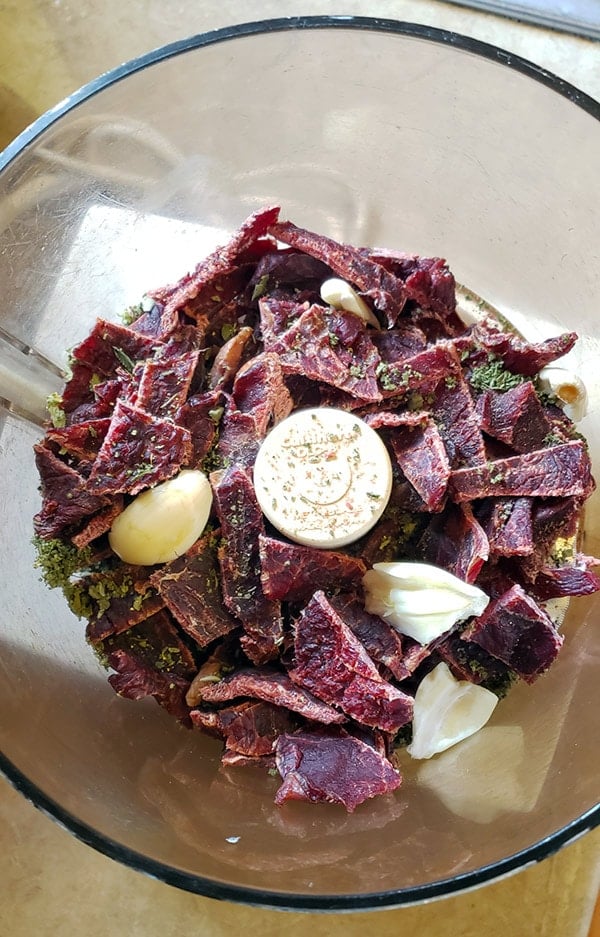
You now have machaca that will keep at room temperature if you are in a dry climate, or in the fridge more or less forever everywhere else.
Most people eat machaca with scrambled eggs, cheese and maybe cooked potatoes in a breakfast burrito, but in Baja, you will see it without eggs, cooked with lots of onions and poblanos, and then served on tortillas as a taco. In Nuevo Leon, you’ll see machaca served with refried beans on a flour tortilla.
I also love machaca tossed in with some of my homemade salsa verde, simmered maybe 15 minutes, then stuffed in a burrito or on a taco.
How to Make Machaca
Ingredients
- 4 pounds chuck roast or beef or venison without much connective tissue
- Salt
- 6 cloves garlic
- 1 tablespoon dried Mexican oregano
Instructions
- Slice the meat as thin as you can, either across or with the grain — your choice. Salt it well and store in the refrigerator overnight.
- Dehydrate it. I smoke the meat at 175°F until it is brittle, but you can use the sun if you are in a desert area in summer, or a dehydrator, or even an oven set on low. You want the meat to be very brittle.
- Break it into pieces with your hands or scissors, then add the garlic and oregano and blitz it for about 3 minutes in a food processor. You may have to give the machine some breaks in case it gets too hot. Lay out the finished machaca on a baking sheet for the rest of the day to fully dry some more, then it will be stable at room temperature in dry places. If you are in a humid place, keep your machaca in the fridge, where it will last months.
Nutrition
Nutrition information is automatically calculated, so should only be used as an approximation.
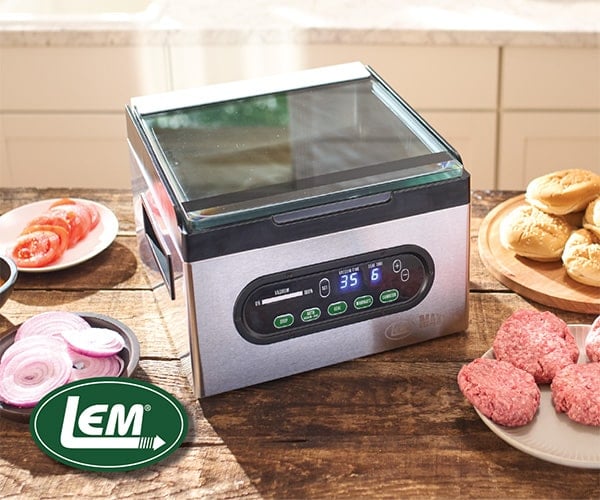

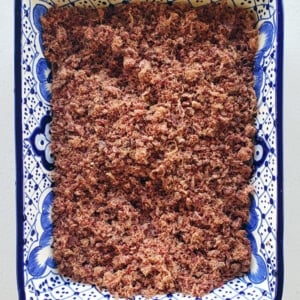
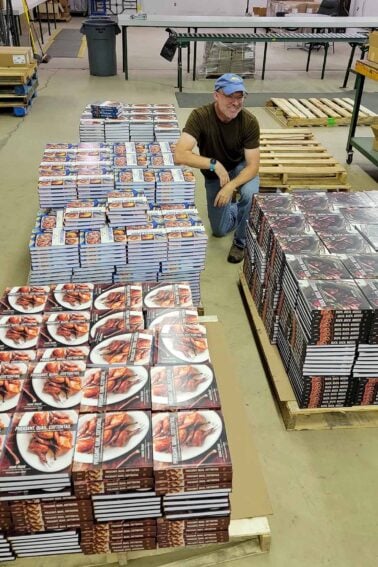
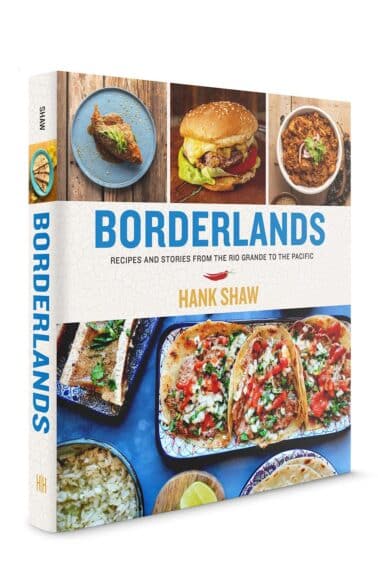
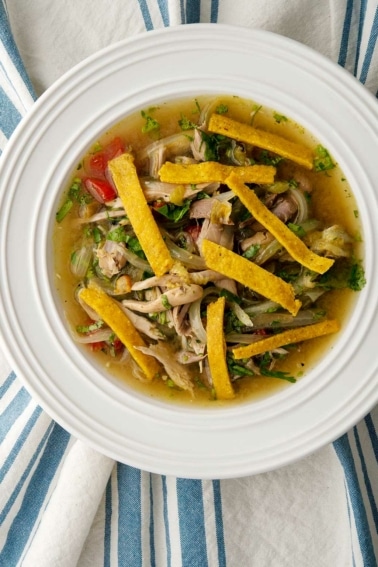
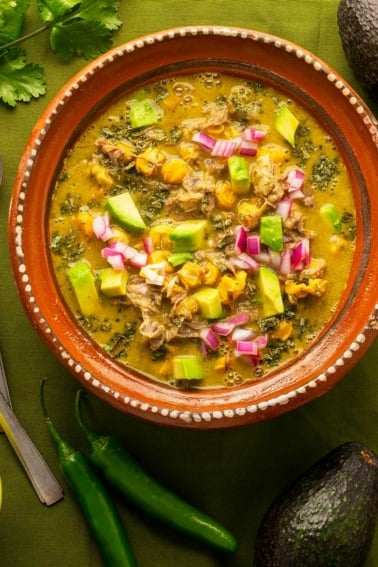
Made some breafast tacos with the elk machaca I made and they were incredibly good. I’m from the Tucson area, so I’ve had lots of machaca and it was better than most restaurants I’ve had. This is a great way to preserve meat when you don’t have room left in the freezer.
Thank you for explaining this process.
I live in Florida where it is VERY humid. You made a comment about it needing to be refrigerated to last in a humid climate.
I am thinking of trying to home make pemmican so that I can have a shelf stable form of highly nutritious food that will last a decent while, if the food shortages get worse (I have a lot of food restrictions due to allergies and meat is one of the only protein sources that goes well).
I was wondering if you had any other “humid climate” related advice in regard to this process or any experience with if putting the machaca with the tallow for pemmican will help it stay more shelf-stable even in a humid climate? It is good that it will last in the refrigerator, but it would be even more helpful to me if it could last unrefrigerated for a few months or so, especially if hiking or camping with no access to refrigeration.
C Stevens: Sorry, wet and humid places don’t lend themselves to this sort of preservation. Everything rots and molds down there. Sorry.
Ever tried making biltong machaca or is that a stupid idea?
Daniel: I have not tried that.
I’ve got pile of snow geese breasts……thoughts on using them for this??
Douglas: Sure. Just slice them thinly and pound the cutlets to make them thinner. Think schnitzel, and then make it thinner!
Thank you, Hank! One question: You write “Salt it well and store in the refrigerator overnight.” Then, “Dehydrate it.” Do you just brush off the adhering salt, leave it on, or rinse it off the meat before dehydrating?
Curiouscook: You won’t even see it. You are basically quick curing the meat overnight. Just move from fridge to dehydrator or smoker.
How do you store the dried meat before it is shredded for machaca? and how long can you keep it?
Miercolez: Before shredding? It’s jerky. And dry jerky at that. It’s basically indestructible. That said, I generally make the jerky and within a few days make the machaca from it.
Thank you! I had no idea making jerky could be so simple. This is also a great and appetizing way to use jerky on camping trips.
Should be plenty of rocks!
This is how our famiyly business has been making machaca here in Nuevo Leon for years! Machaca would be short for Machacado (pounded), as the carne seca was wpounded with a wood mallet or the back of a hand axe over an oak stump, (later we went with steel roller machines) too soften it enough to use alone or to shed it by hand, or it is rolled thinner until its fibers separate and it shreds. We can also shred it with a hammer mill.Then we could sell it like Entera (whole) or deshebrada (shreded).
Ricardo: Awesome! I need those steel roller machines…
hello
i was reading the comments to the article on making Machaca. did you ever get any follow up on the machines and their availability. or will i have to go to Mexico to find more information. not to difficult as i live in east texas.
joe
artbyjoe000@gmail.com
936-200-9438
Joe: I’ve never seen the machines here. Sorry.
It is shelf stable after blitzing with the garlic cloves? I would think their moisture would make it mould?
Krysta: It is. The small amount of moisture in the garlic dries out when you leave the machaca to fully dry after blitzing.
This is cool. I never heard of this before, but sounds like something I’d try. Why do you say it’s a lot of work to make it the traditional way. It only took that lady with the delicate hands 6:01 in the video to do it. Haaaa.
I think I’m going to try this this summer using a big molcajete that I have. I don’t think I need to make a grandma batch to give this a try.
Hey Hank-
I think you meant round steak mot chuck, because you said the meat came from the hind quarter. Recipe sounds delicious, perfect Mexican Christmas dish.
Whoa! Never seen this before in Mexican food, but there’s a Chinese version that is very common, see e.g. https://taiwanduck.com/home-made-pork-floss/
I winter in Baja, but never knew how machaca was made, thanks!